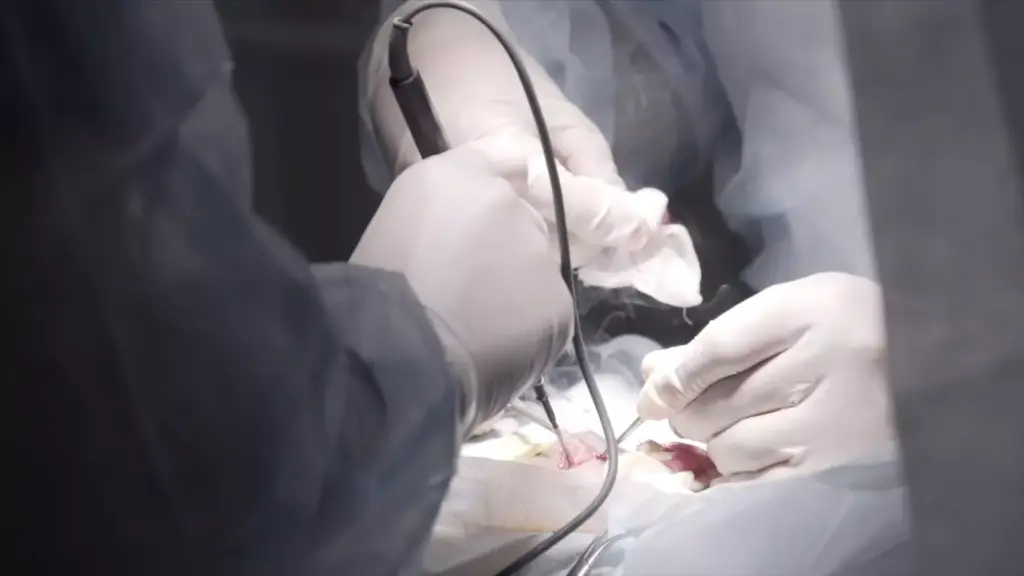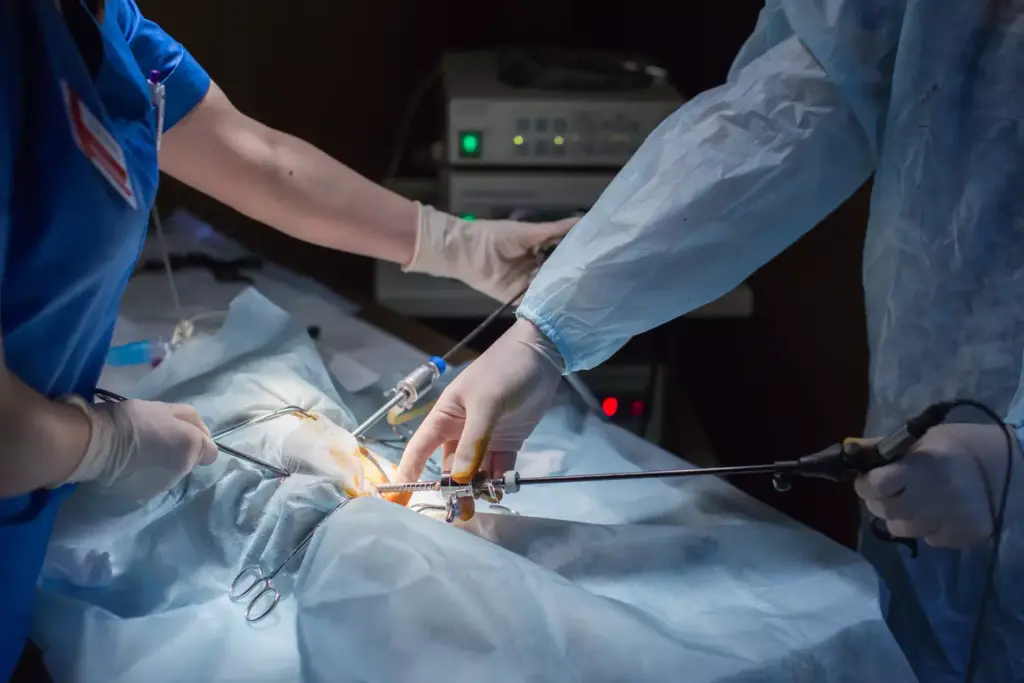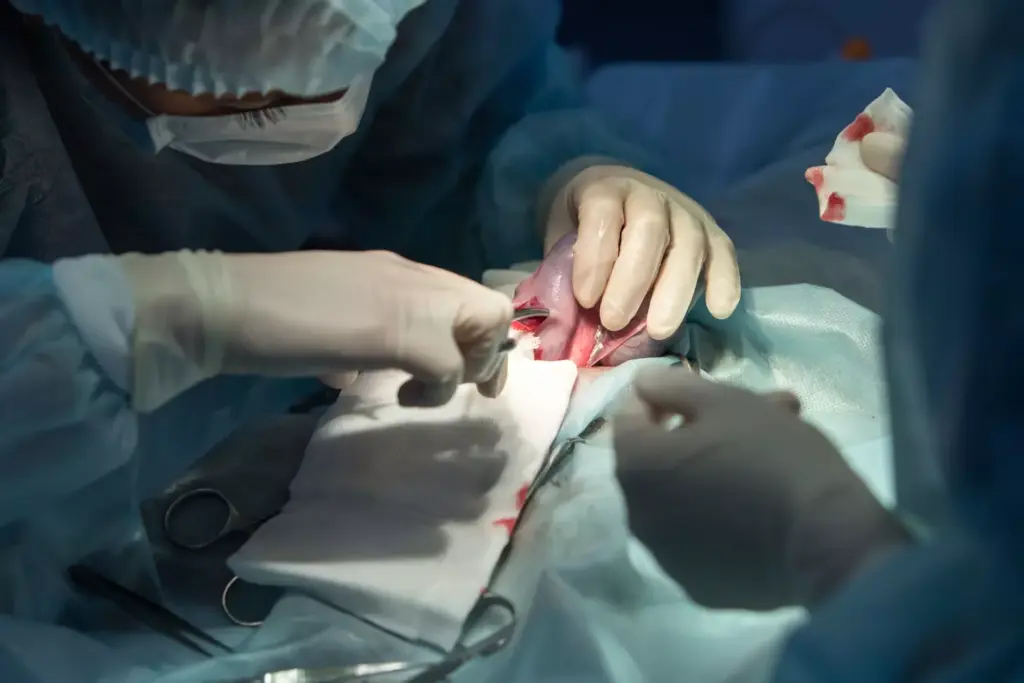Last Updated on November 4, 2025 by mcelik

An aneurysm of the ascending aorta is a serious condition. It happens when the aorta, the biggest blood vessel, gets too big near the heart. This can cause serious problems if not treated quickly.
At Liv Hospital, we know how important ascending aortic aneurysm surgery is. We act fast to help our patients. Our team uses the latest technology to give our patients the best care for ascending aortic aneurysm repair.

It’s important to understand ascending aortic aneurysms for effective treatment. An ascending aortic aneurysm happens when the aorta’s first part gets weak and bulges. The aorta is the biggest artery in the body.
An aneurysm of the ascending aorta is a serious condition. It happens when the aorta’s wall weakens and gets bigger. This can lead to rupture, dissection, or other serious complications if not treated.
About 60% of thoracic aortic aneurysms occur in the ascending aorta. The risk of rupture or dissection goes up when the aneurysm is over 5.0 to 5.5 cm in diameter.
The ascending aorta starts from the left ventricle of the heart. It’s key for delivering oxygenated blood to the body. Because of high pressures, it’s more likely to develop aneurysms.
There are two main types of ascending aortic aneurysms: fusiform and saccular. A fusiform aneurysm affects the whole aorta, causing it to dilate evenly. On the other hand, a saccular aneurysm is a localized, pouch-like dilation that only involves part of the aortic wall.

Understanding the causes of ascending aortic enlargement is key to managing it well. Ascending aortic aneurysms come from a mix of genetic, congenital, and lifestyle factors.
Genetics play a big role in getting ascending aortic aneurysms. Conditions like Marfan syndrome and Ehlers-Danlos syndrome raise the risk. These disorders weaken the aortic wall, making it prone to aneurysms.
A bicuspid aortic valve is a congenital issue linked to a higher risk of aneurysms. This condition, where the aortic valve has only two cusps, can cause problems like aneurysm formation.
Age is another big factor. The risk of an ascending aortic aneurysm grows with age, more so after 65. Lifestyle choices, like smoking and hypertension, also impact aneurysm development and growth.
People over 65 or with heart diseases are at the highest risk. By changing lifestyle habits and using medical treatments, we can lower the risk of ascending aortic enlargement.
It’s important to know the symptoms of aneurysmal dilation of the ascending aorta. Early detection can help prevent serious health issues. This can greatly improve treatment outcomes and patient care.
People with this condition often feel chest pain and shortness of breath. Chest pain can happen when the aneurysm presses on nearby tissues or causes cardiac complications. Shortness of breath might occur if the aneurysm hampers the heart’s function.
For more detailed information on the symptoms and causes of aortic aneurysm, you can visit Mayo Clinic’s resource on aortic aneurysm.
Some people may not notice symptoms until the aneurysm grows a lot or ruptures. This asymptomatic progression shows why regular check-ups and screenings are key for those at risk.
Certain symptoms mean a higher risk of rupture or dissection and need quick medical help. These include:
If you or someone you know has these symptoms, getting emergency care right away is vital.
We use the latest tools to check and watch the size of an enlarged ascending aorta. At our place, we know how key it is to get the diagnosis right. This helps us manage aortic issues well.
Advanced imaging is key in spotting an enlarged ascending aorta. We use cardiac CT scans and transthoracic echocardiograms to see the aorta clearly. These tools help us measure the aneurysm’s size and shape.
Cardiac CT scans give us detailed pictures of the aneurysm’s size and how it affects nearby areas. Transthoracic echocardiograms show the heart and aorta in real-time. This lets us check the heart’s function and spot any issues.
It’s vital to measure and track the aneurysm’s size to figure out the best treatment. We use the images to watch how the aneurysm changes over time. This helps us spot risks early and act fast.
The aneurysm’s size is measured at its biggest point. We keep an eye on how this size changes. This tells us when surgery might be needed.
How often we check depends on the aneurysm’s size, how fast it’s growing, and the patient’s health. Smaller aneurysms might need less checking, while bigger ones or those growing fast need more.
We make a plan for each patient based on their needs. This way, we catch any changes in the aneurysm quickly. It helps us give the best care for those with an enlarged ascending aorta.
Deciding if you need surgery for an ascending aortic aneurysm is complex. We look at many factors to see if surgery is needed to avoid serious problems.
The size of the aneurysm is key in deciding if surgery is needed. Aneurysms over 5.0 to 5.5 cm are at high risk of rupturing or dissecting. Experts say that if an aneurysm is over 2 inches, growing fast, or causing serious symptoms, surgery is advised.
It’s important to watch the aneurysm’s size with regular tests. The growth rate also matters; fast-growing aneurysms may need surgery, even if they’re small.
Symptoms like chest pain or shortness of breath are important. These symptoms mean the aneurysm is pressing on nearby structures or could burst soon. In these cases, surgery is often needed quickly to avoid serious risks.
“Symptoms show the aneurysm is affecting your health a lot. Quick surgery can save your life.”
Figuring out the risk of rupture or dissection is complex. We look at the aneurysm’s size, growth, and your overall health. People with certain conditions may be at higher risk and might need surgery sooner.
We do a detailed risk assessment for each patient. This helps us decide the best treatment plan. Advanced imaging lets us tailor care and make informed decisions about surgery.
Ascending aortic aneurysm surgery includes many procedures. These range from traditional open surgery to new minimally invasive methods. The right surgery depends on the aneurysm’s size, location, the patient’s health, and any other conditions.
Open surgery involves cutting through the sternum to reach the aorta. This method lets surgeons see and fix the aneurysm directly. Open surgical replacement is best for big aneurysms or those growing fast.
The patient is on a heart-lung machine during surgery. This keeps blood flowing while the aorta is fixed. A synthetic graft replaces the bad part, sewn into place. Over time, this method has gotten better, thanks to new surgical skills and care.
Minimally invasive techniques are a new option for some patients. They use smaller cuts and might mean less recovery time and less scarring. Endovascular repair, where a stent-graft is inserted through arteries, is one such method.
Not everyone can have this surgery. But for those who can, it’s a gentler option with faster recovery.
For tough cases, hybrid procedures mix open surgery with endovascular methods. These are great for aneurysms that affect many parts of the aorta or have other issues.
Hybrid procedures offer a custom solution. They use the best of both worlds to tackle the patient’s unique situation.
Fixing an ascending aortic aneurysm is just the start. A detailed recovery plan is key for the best results. We tailor our approach to help patients recover well and have a good prognosis.
The recovery starts in the hospital. Here, patients are watched closely for any surgery issues. Immediate post-operative care focuses on pain, infection signs, and getting the patient moving.
When patients wake up, they start physical therapy and daily tasks. This is key for getting strong and independent again.
Recovery times differ, but most see big improvements in a few months. Important milestones include:
Fixing an ascending aortic aneurysm greatly boosts life expectancy and quality of life for most. New surgery methods and care have led to better results.
Keeping an eye on patients is vital for catching problems early. Follow-up plans include:
Following these steps helps patients live well and lowers the risk of heart problems later.
Managing aneurysmal ascending aorta without surgery is a detailed process. It includes medical therapy and lifestyle changes. Not every patient needs surgery right away. A non-surgical plan can be made just for them.
Medical therapy is key in managing aneurysmal ascending aorta. We use medicines to control blood pressure and lessen blood force on the aneurysm walls. Beta-blockers and angiotensin II receptor blockers (ARBs) help slow the aneurysm’s growth.
The right medicine depends on the patient’s health and condition. It’s important to keep an eye on how the treatment is working and make changes as needed.
| Medication | Purpose | Benefits |
|---|---|---|
| Beta-blockers | Reduce heart rate and blood pressure | Slow aneurysm growth, reduce risk of rupture |
| ARBs | Lower blood pressure, reduce strain on aneurysm | Slow aneurysm growth, improve overall cardiovascular health |
Changing your lifestyle is important in managing aneurysmal ascending aorta. We suggest quitting smoking, eating healthy, and staying active. These steps can help slow aneurysm growth and improve health.
Managing stress and keeping a healthy weight is also key. We help with stress reduction and healthy eating plans for the heart.
Watchful waiting is used for small aneurysms without symptoms. We keep an eye on the aneurysm’s size and growth with regular tests.
This method lets us step in with surgery if the aneurysm gets too big or symptoms appear. Regular check-ups are vital to adjust the plan as needed.
There have been big improvements in treating ascending aortic aneurysms. Open-heart surgery for these issues works well if planned ahead. This change has made treatment more effective and timely.
New surgical methods have made care better. Now, treatments can be tailored to each patient. This means patients can enjoy a better quality of life after surgery.
We are dedicated to top-notch healthcare for everyone, including international patients. Our work helps those with ascending aortic aneurysms. We keep working to make treatments better and save more lives.
An ascending aortic aneurysm is a bulge in the main artery that carries blood from the heart. This artery is called the ascending aorta. It can be very dangerous if it bursts or tears.
Symptoms include chest pain, shortness of breath, and back pain. But, some aneurysms don’t show symptoms until they burst or tear. This is a serious emergency.
Doctors use CT scans, MRI, or echocardiography to check the aorta’s size. These tests help see if there’s an aneurysm.
Surgery is needed if the aneurysm is too big (usually over 5.0-5.5 cm). It’s also needed if symptoms are present or if there’s a high risk of rupture or tear.
Doctors use open surgery, minimally invasive techniques, and hybrid procedures. The choice depends on the patient’s health and the aneurysm’s size and shape.
After surgery, patients stay in the hospital and then rest at home. They are watched for any problems. Most people can get back to normal activities over time.
Yes, sometimes. Small aneurysms without symptoms can be managed with medicine and lifestyle changes. This is called watchful waiting.
Monitoring depends on the aneurysm’s size and the patient’s health. Regular tests are used to check the aneurysm’s size and watch for risks.
To reduce risks, manage blood pressure, quit smoking, exercise, and eat healthy. These steps can help prevent aneurysm growth or rupture.
With successful surgery and care, many patients live a normal life. They need ongoing monitoring to catch any problems early.
Risks include bleeding, infection, and reactions to anesthesia. Specific risks include stroke, kidney injury, and problems with the heart bypass machine.
Subscribe to our e-newsletter to stay informed about the latest innovations in the world of health and exclusive offers!
WhatsApp us